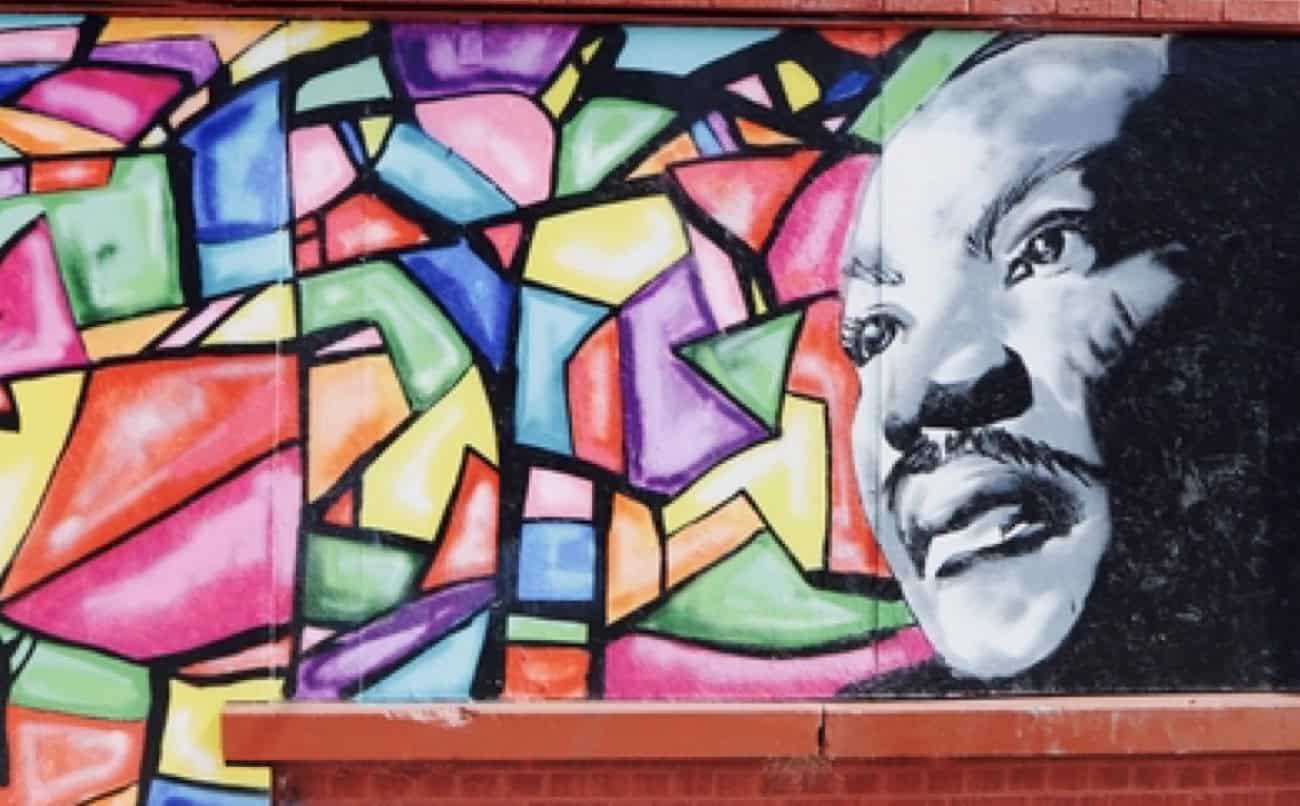
Dear Broadview Family:
Mary Baker Eddy became a visionary leader by taking Jesus at his word — especially his promise that his followers would accomplish “greater works than these.”1 We might say the same of the man whose birthday we celebrate today: Rev. Dr. Martin Luther King, Jr.
Remembering Dr. King as a world-famous civil rights leader, it’s easy to forget that he considered himself just a preacher,2 following the logic of love that he found in the gospels.3 We might forget, too, that King was devoted to Christian healing — though he conceived of it differently than Mary Baker Eddy.
For Mrs. Eddy, anything not in alignment with the loving nature of an all-powerful God could be healed. By contrast, King focused primarily on healing our torn social fabric. He wanted to replace widespread prejudice and injustice with redemption and reconciliation,4 and he thought that this is what Jesus meant by “greater works than these.” 5
Moreover, King was convinced that “greater works” could best be achieved through nonviolent resistance to unjust laws: the method that Mahatma Gandhi used to end British rule in India.6 “‘Christ gave us the goals,’” King often said, “‘and Mahatma Gandhi provided the tactics.’”7
But how exactly, according to King, does nonviolence result in Christian healing? For one thing, nonviolence is a collective expression of love and forgiveness, so it enhances the courage and self-respect of those who engage in it.8 King often gave the example of a 72-year-old woman who walked miles to work rather than ride a segregated bus in Montgomery. “My feets is tired,” she said, “but my soul is rested.”9
Also, nonviolence “stirs the conscience” of people opposed to social change, “so that reconciliation becomes a reality.” 10 The Birmingham police, King said, understood the physics of attack dogs and fire hoses, but not the “trans-physics” of a protest grounded in love.11 Even the Birmingham jailers were moved by the protesters’ songs and prayers,12 and public reaction worldwide soon resulted in the historic passage of national civil rights laws.13
King thought, too, that nonviolence would ultimately create greater social harmony in the US.14 Visiting India after the end of British rule, he witnessed a remarkable new friendship growing between the Indian and British people. He was convinced that blacks and whites in the US could experience this same peace, trust, and mutual respect, a goal that he called “the beloved community.”15
So King’s mission truly was Christian healing. And perhaps the person most changed by it was King himself. Jailed thirty times, nearly killed in a knife attack, his home and family repeatedly bombed, and his life constantly threatened16 — he conquered fear through an ever-deeper experience of God.17 In King’s last hours on earth, when both his words and his photos suggest a premonition of death, he triumphed by delivering an unforgettable version of the Good Samaritan story (here at 29:15). “Let us develop a kind of dangerous unselfishness,” King urged his followers, hours before his own assassination.
Martin Luther King, Jr. and Mary Baker Eddy may have approached healing in different ways. Yet there’s a phrase of hers that perfectly describes the work they both accomplished: “Love is reflected in love.”18 Today, let’s appreciate the lifelong outpouring of love from both these Christ-like warriors. Let’s pray to know that they both opened the way for “greater works” that will never end.
All our love,

Marivic Bay Mabanag
Executive Director
1 John 14:12 (KJV).
2 See Rev. Dr. Raphael Warnock, Forward to Martin Luther King, Jr. A Gift of Love (2012).
3 See, e.g., Martin Luther King, Jr., “The Man Who was a Fool,” a 1961 sermon; Martin Luther King, Jr., “Loving Your Enemies,” a 1957 sermon revised for his book Strength to Love (1963).
4 See Coretta Scott King, Forward to the 1981 Edition of Martin Luther King, Jr.’s Strength to Love.
5 See Martin Luther King, Jr., “Palm Sunday Sermon on Mohandas K. Gandhi,” a 1959 sermon.
6 See ibid.
7 Coretta Scott King, Forward to the 1981 Edition of Martin Luther King, Jr.’s Strength to Love.
8 See Martin Luther King, Jr., “Pilgrimage to Nonviolence,” a 1960 article.
9 See Martin Luther King, Jr., “Letter from Birmingham Jail,” written in 1963.
10 See Martin Luther King, Jr. “Pilgrimage to Nonviolence,” a 1960 article.
11 Martin Luther King, Jr. “I’ve Been to the Mountaintop,” King’s final speech from 1968, at 14:15 – 16:50.
12 Ibid.
13 See “Birmingham Civil Rights National Monument,” National Parks Service website.
14 See “The King Philosophy,” published on The King Center website.
15 See Martin Luther King, Jr., “Palm Sunday Sermon on Mohandas K. Gandhi,” a 1959 sermon.
16 See Benjamin E Mays’ 1968 “Eulogy for Martin Luther King, Jr.,” republished in The Atlantic.
17 See Martin Luther King, Jr., “The Violence of Desperate Men,” from Stride Toward Freedom (1958); Martin Luther King, Jr., “Pilgrimage to Nonviolence,” a 1960 article.
18 Mary Baker Eddy, Science and Health with Key to the Scriptures, p. 17.
